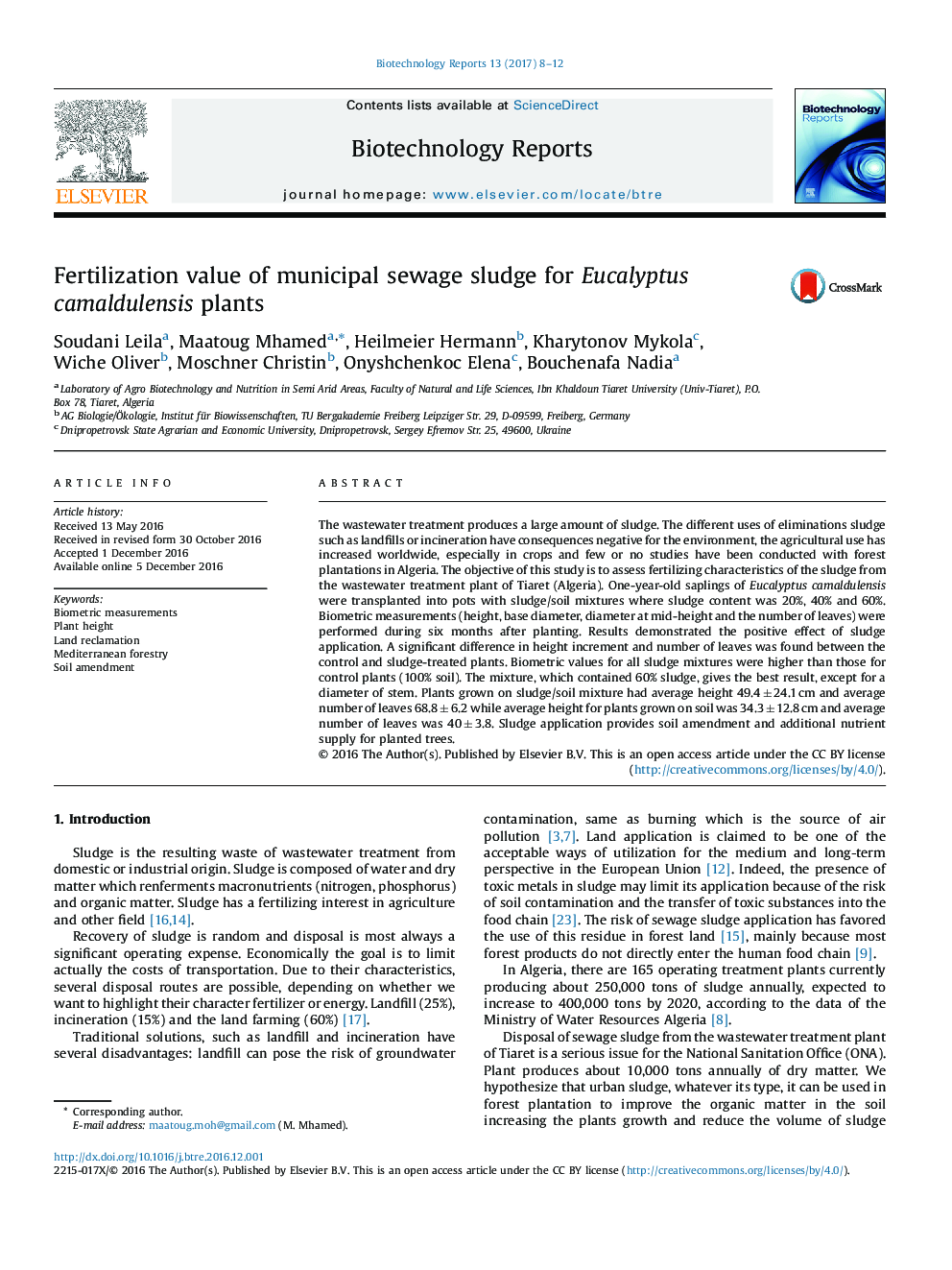| کد مقاله | کد نشریه | سال انتشار | مقاله انگلیسی | نسخه تمام متن |
|---|---|---|---|---|
| 5031791 | 1471018 | 2017 | 5 صفحه PDF | دانلود رایگان |

- The proposed article aims to show the interest of the use of sludge in plantation forestry. Secondly, it offers solutions to the problems of storage of sludge at the wastewater treatment.
- Oneâyearâold saplings of Eucalyptus camaldulensis were transplanted into pots with different doses of sludge: 20%, 40% and 60%, mixed with an agricultural soil. Biometric measurements (height, base diameter, diameter at midâheight and the number of leaves) were performed for six months of planting, showing the positive effect of spreading the sludge on the growth of the plants.
- A significant difference in height increment and number of leaves was found between the control and sludgeâtreated plants. The recorded biometric values were for all the doses, well above those of control plants (100% soil), with high values shown in the mixture of 60% sludge, whereas growth in diameter was not affected by the three treatments.
- The results obtained were: 493.77 ± 241 mm for height growth and 68.81 ± 6.2 for number of leaves, against: 342.89 ± 128.07 mm for height and 40 ± 3.8 for the number of leaves in control soils.
- This study also confirms the use of sludge as soil fertilizer in urban areas. The soils of cities are highly heterogeneous and consist of various materials. Thus, the physical properties of these soils are characterized by high compaction, poor ventilation and poor water permeability. It is necessary to provide an amendment of sludge from sewage treatment plants, to create soil suitable for planting trees growing in towns.
The wastewater treatment produces a large amount of sludge. The different uses of eliminations sludge such as landfills or incineration have consequences negative for the environment, the agricultural use has increased worldwide, especially in crops and few or no studies have been conducted with forest plantations in Algeria. The objective of this study is to assess fertilizing characteristics of the sludge from the wastewater treatment plant of Tiaret (Algeria). One-year-old saplings of Eucalyptus camaldulensis were transplanted into pots with sludge/soil mixtures where sludge content was 20%, 40% and 60%. Biometric measurements (height, base diameter, diameter at mid-height and the number of leaves) were performed during six months after planting. Results demonstrated the positive effect of sludge application. A significant difference in height increment and number of leaves was found between the control and sludge-treated plants. Biometric values for all sludge mixtures were higher than those for control plants (100% soil). The mixture, which contained 60% sludge, gives the best result, except for a diameter of stem. Plants grown on sludge/soil mixture had average height 49.4 ± 24.1 cm and average number of leaves 68.8 ± 6.2 while average height for plants grown on soil was 34.3 ± 12.8 cm and average number of leaves was 40 ± 3.8. Sludge application provides soil amendment and additional nutrient supply for planted trees.
Journal: Biotechnology Reports - Volume 13, March 2017, Pages 8-12